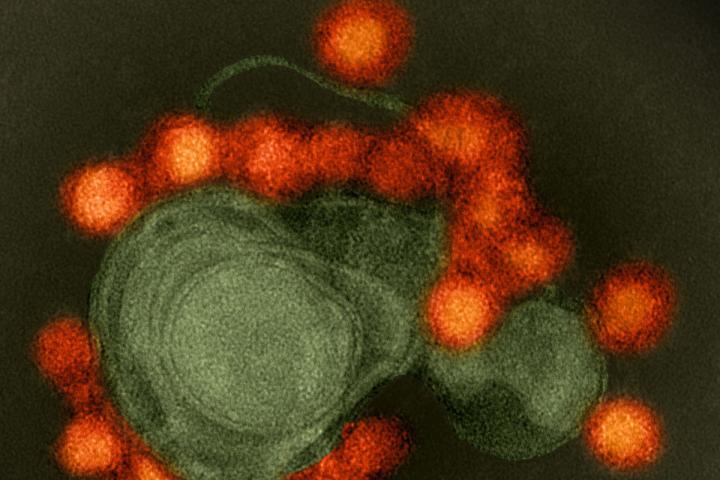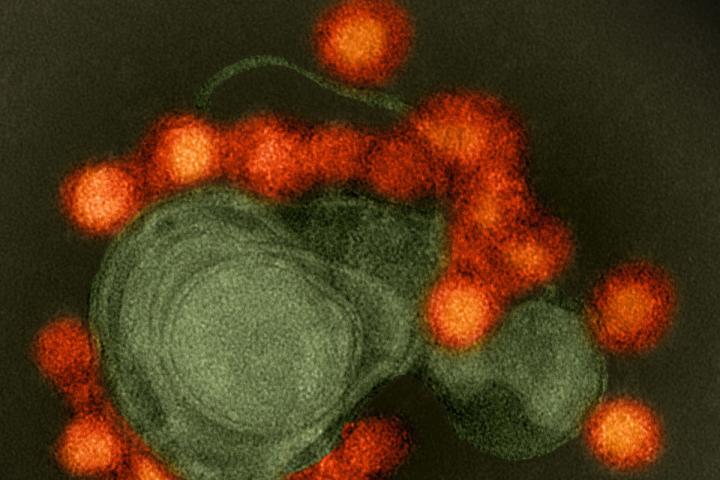
Credit: Courtesy image
Even as the Zika virus becomes more prevalent — the Centers for Disease Control reports that the number of U.S. infants born with microcephaly and other birth defects is 20 times over the normal rate — researchers are still trying to fully pin down the identifying consequences of the viral infection.
In a new paper published this week in the American Journal of Medical Genetics, first author Miguel del Campo, MD, PhD, associate professor in the Department of Pediatrics at University of California San Diego School of Medicine, and colleagues in Brazil and Spain, describe the phenotypic spectrum or set of observable characteristics of congenital Zika (ZIKV) syndrome, based upon clinical evaluations and neuroimaging of 83 Brazilian children with presumed or confirmed ZIKV congenital infections.
"These findings provide new insight into the mechanisms and timing of the brain disruption caused by Zika infection, and the sequence of developmental anomalies that may occur," said del Campo, who also serves as a medical geneticist at Rady Children's Hospital-San Diego.
The physical characteristic most associated with Zika infection is microcephaly, a birth defect in which the baby's brain does not develop properly resulting in a smaller than normal head. In this case, prenatal brain development is initially normal, but then disrupted by the viral infection of neural progenitors. The research team reported that evidence of microcephaly and related skull abnormalities was present in 70 percent of the infants studied, though often it was subtle.
"Some cases had milder microcephaly or even a normal head circumference," said del Campo.
Besides the redundant scalp and abnormal cranial shapes resulting from the arrest in brain growth, other physical features consistent with ZIKV infection reflect immobility of the joints, resulting from altered brain function in utero. These included deep and multiple dimples (30.1 percent), distal hand or finger contractures (20.5 percent), feet malpositions (15.7 percent) and generalized athrogryposis involving multiple joints (9.6 percent).
Neurologically, the primary features seen most often and most evidently in infants were alterations in motor activity, reflected in body tone, posture and motility or movement; severe hypertonia (abnormal muscle tension and contraction); abnormal neurobehaviors, such as poor or delayed response to visual stimuli, and excitability. Babies cried excessively but monotonously, and were often inconsolable.
Brain imaging revealed combinations of characteristic abnormalities, such as calcifications, poor gyral patterns and underdevelopment of the brainstem and cerebellum. There was a marked decrease in both gray and white matter volumes.
Del Campo said the findings suggest these children will have severe disabilities, a reality with strong implications for future clinical care. They highlight the variable severity of ZIKV brain damage and other characteristics, depending upon onset of maternal infection. Earlier detection of maternal and prenatal infection, he said, is critical to developing remedies to prevent or ameliorate ZIKV effects.
###
Co-authors include: Ian M.L. Feitosa, André A. Silva, Fernanda S. L. Vianna, and senior author Lavinia Schuler-Faccini, Departamento de Genetica, Universidade Federal de Rio Grande do Sul, Porto Alegre, Rio Grande do Sul, Brazil; Erlane M. Ribeiro, Andre L.S. Pessoa and Saile C. Kerbage, Hospital Infantil Albert Sabin, Fortaleza, Ceara, Brazil; Dafne D. G. Horovitz, Instituto Fernandes Figueira, Fundação Oswaldo Cruz, Rio de Janeiro, Brazil; Giovanny V. A. França, Secretariat of Health Surveillance, Ministry of Health, Brasilia, Brazil; Alfredo García-Alix, Institut de Recerca Pediàtrica Sant Joan de Déu, Universitat de Barcelona, Barcelona, Spain; Maria J. R. Doriqui, Hospital Infantil Dr. Juvêncio Mattos, São Luiz, Brazil; Hospital Infantil, São Luiz, Brazil; Hector Y. C. Wanderley, Secretaria de Estado da Saúde do Espírito Santo, Vitória, Brazil; Maria V. T. Sanseverino, SIAT-Brazilian Teratogen Information Service, Medical Genetics Service, Hospital de Clinicas de Porto Alegre, Porto Alegre, Rio Grande do Sul, Brazil; João I. C. F. Neri, Universidade Potiguar, Natal, Brazil; João M. Pina-Neto, Faculdade de Medicina de Ribeirao Preto, Departamento de Genetica, Universidade de Sao Paolo, Ribeirao Preto, Brazil; Emerson S. Santos, Universidade Federal de Sergipe, Lagarto, Brazil; Islane Verçosa, Centro de Aperfeiçoamento Visual Ver a Esperança Renascer/CAVIVER, Fortaleza, Brazil; Mirlene C. S. P. Cernach, Departamento de Genetica Medica, Universidade Federal de Sao Paolo (UNIFESP), Sao Paolo, Brazil; Paula F. V. Medeiros, Universidade Federal de Campina Grande, Campina Grande, Paraiba, Brazil; Vanessa van der Linden, Associação de Assistência à Criança Deficiente/AACD, Recife, Brazil; Celina M. T. Martelli, Marli T. Cordeiro and Rafael Dhalia, Centro de Pesquisas Aggeu Magalhães, Fundação Oswaldo Cruz, Recife, Brazil; Cesar G. Victora, Graduate Program in Epidemiology, Federal University of Pelotas, Pelotas, Rio Grande do Sul, Brazil; and Denise P. Cavalcanti, Departamento de Genetica Medica, Universidade de Campinas UNICAMP, Campinas, Brazil.
Media Contact
Scott LaFee
[email protected]
858-249-0456
@UCSanDiego
http://www.ucsd.edu





